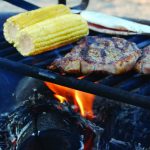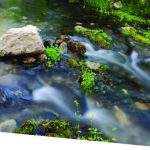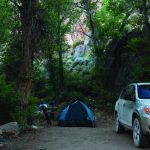Camping… Rural Nevada Style
July – August 2013
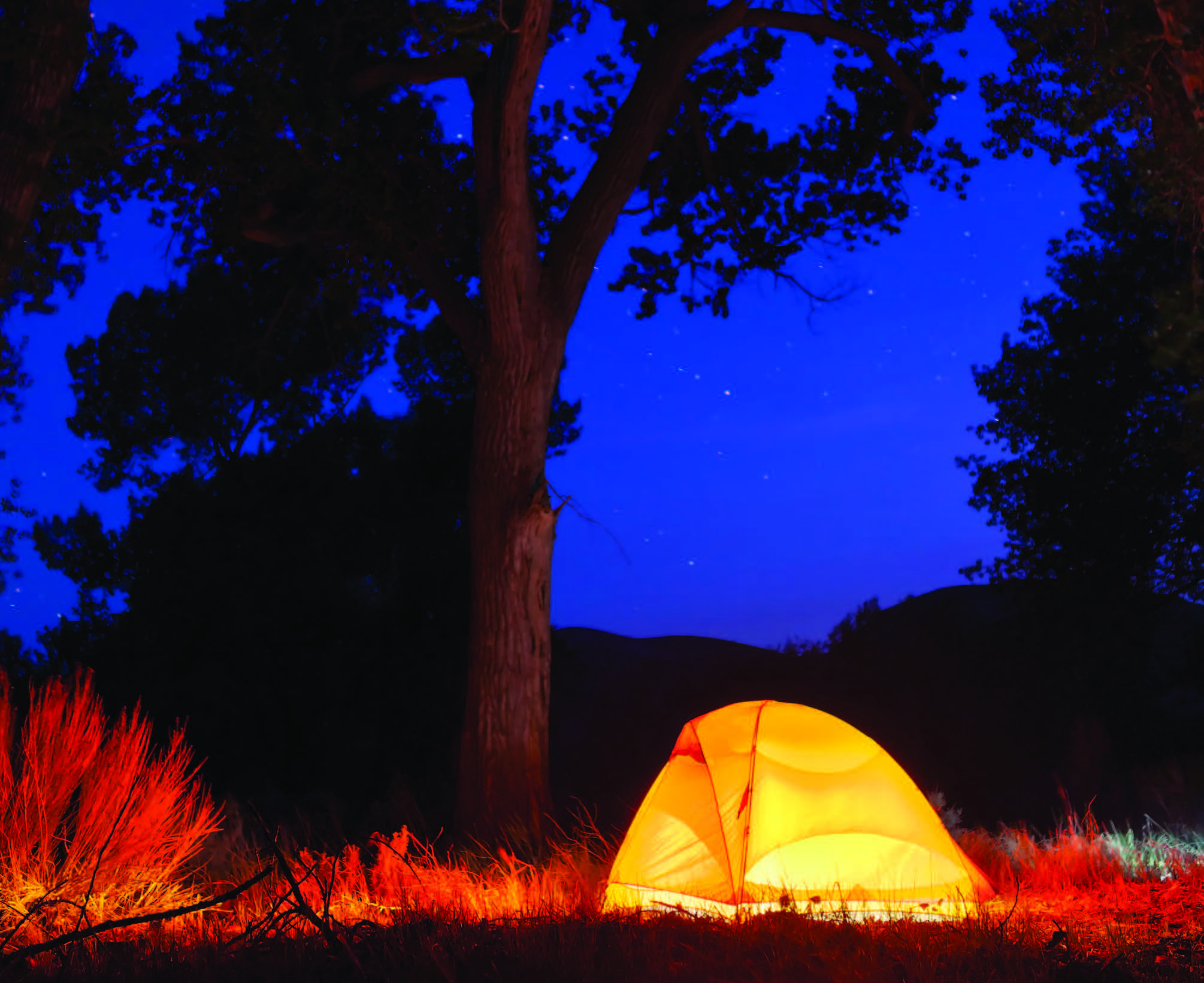
Camping… Rural Nevada Style
BY NEVADA MAGAZINE
We don’t know about you, but when we’re camping, we want to feel like we’re camping. We don’t want a lot of neighbors, and we surely don’t want to be bothered by our smart phones. We want isolation. We want peace. In Nevada, we have just that. Summer has arrived, which means a lot of families are planning their next camping adventure. Road trip, anyone? The Silver State’s off-the-beaten-path campsites provide beauty and true solitude.
COLUMBINE CAMPGROUND
Don’t let Columbine Campground’s small stature (five first-come, first-served sites) fool you. What it lacks in size it makes up for in location, solitude, and sheer beauty. Set amid an enormous aspen grove 8,500 feet up the western flank of the Toiyabe Range, Columbine ranks as one of the most scenic and unique campgrounds in Nevada. While the site is rumored to be accessible to RVs up to 35 feet long, the access road requires high-clearance creek crossings and is narrow in places. Combine that with the tight space at the campsites, and Columbine is better suited for tent campers.
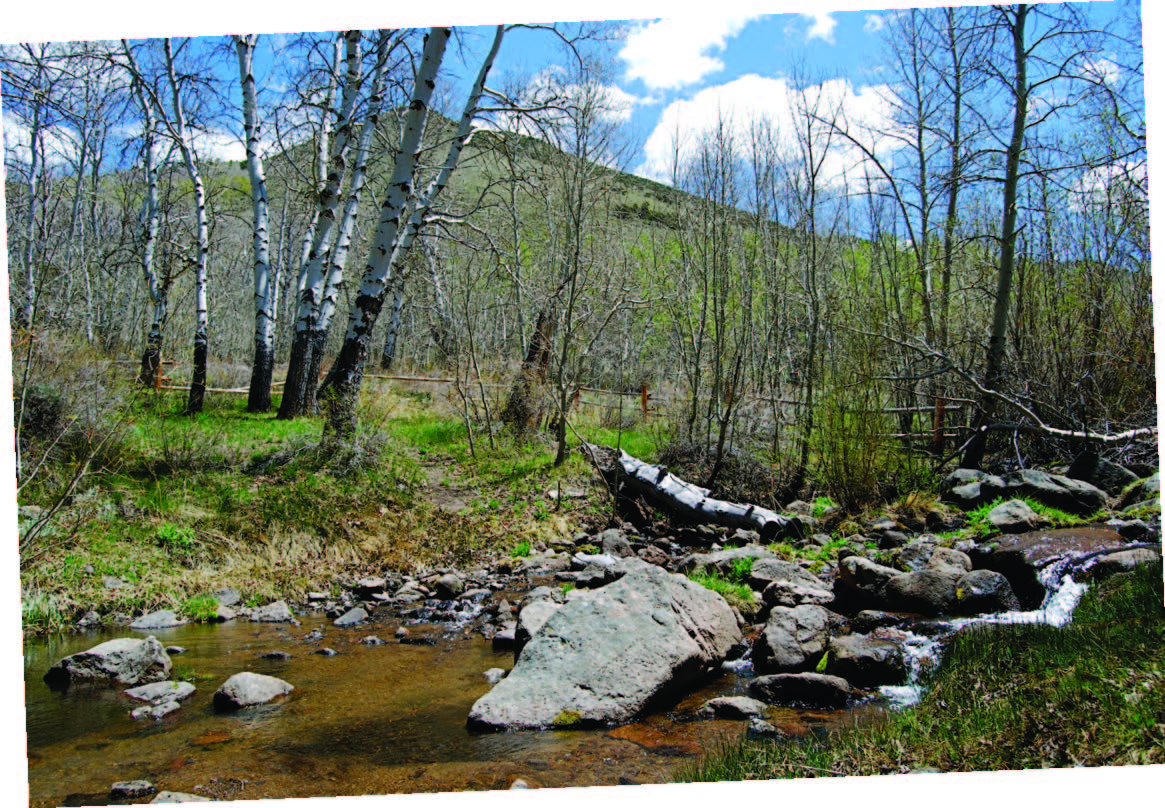
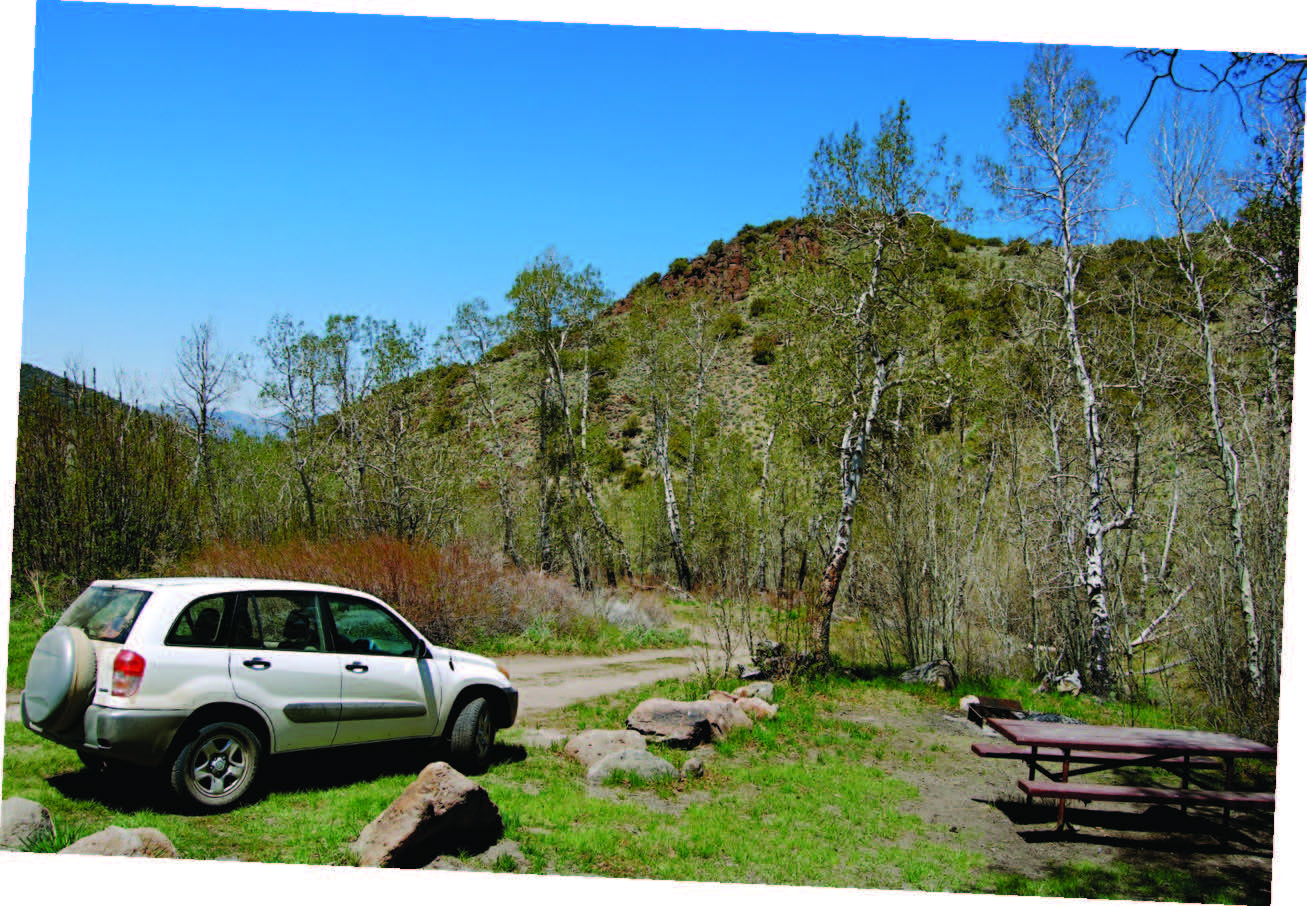
Like most of Nevada’s best remote campgrounds, amenities are sparse, but a vault toilet, fire rings, and picnic tables up the comfort quotient. The water in Stewart Creek runs year-round and is clean and cold, but it’s still a good idea to purify it before drinking. The Arc Dome Wilderness’ northwestern boundary is just steps from the campground, where a trailhead provides access to several trails, including short hikes into the surrounding aspens, the Arc Dome summit trail, and the 72-mile Toiyabe Crest National Recreation Trail. A stock loading ramp is available for campers with horses.
One thing’s for sure, campers will be glad they made the trek. “Columbine is one of the nicest Forest Service campgrounds in the Nevada system,” writes Mike White in Backpacking Nevada, “a wonderful setting for a night’s rest after the long drive.”—Charlie Johnston
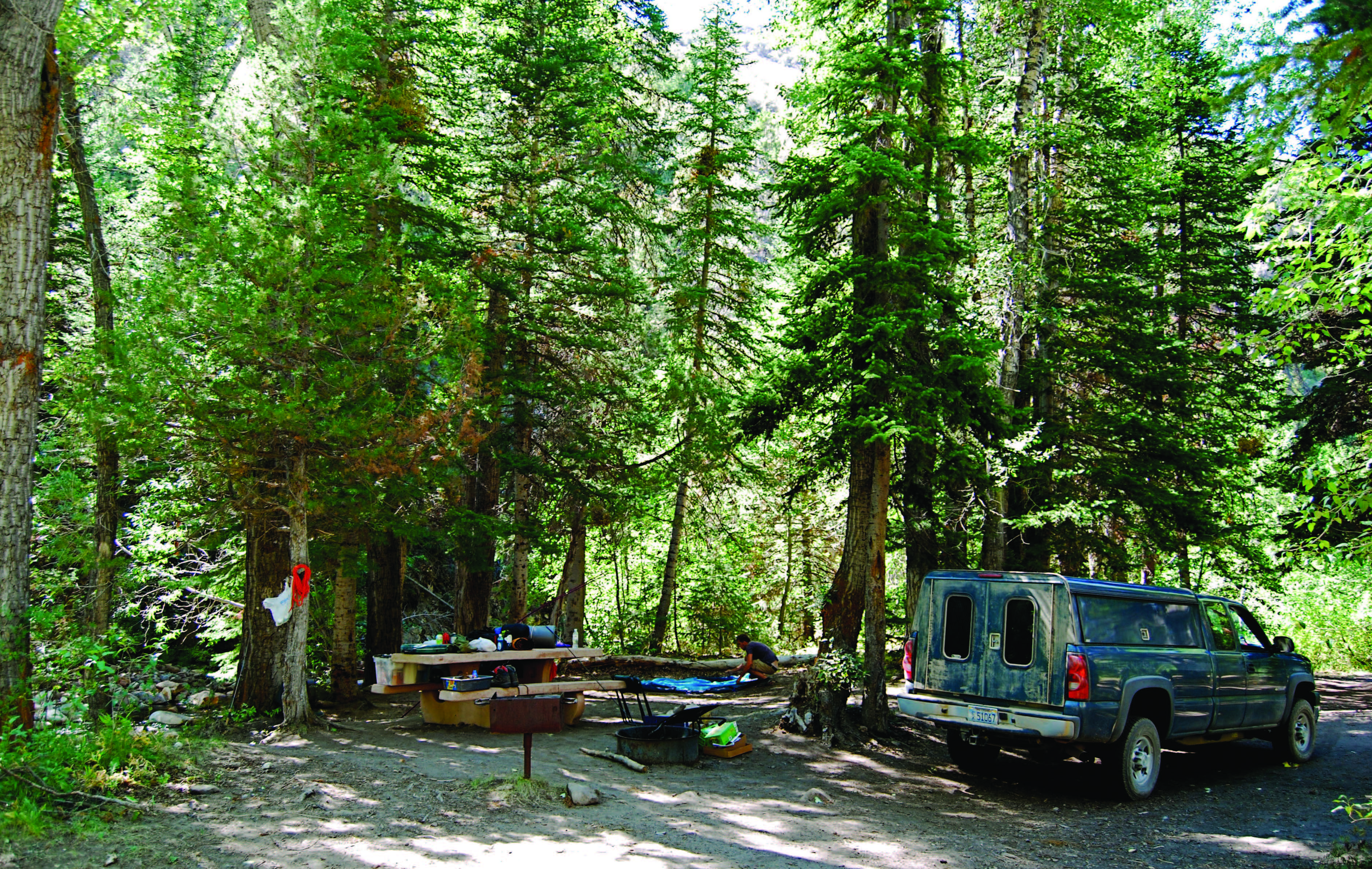
JARBIDGE CAMPGROUND
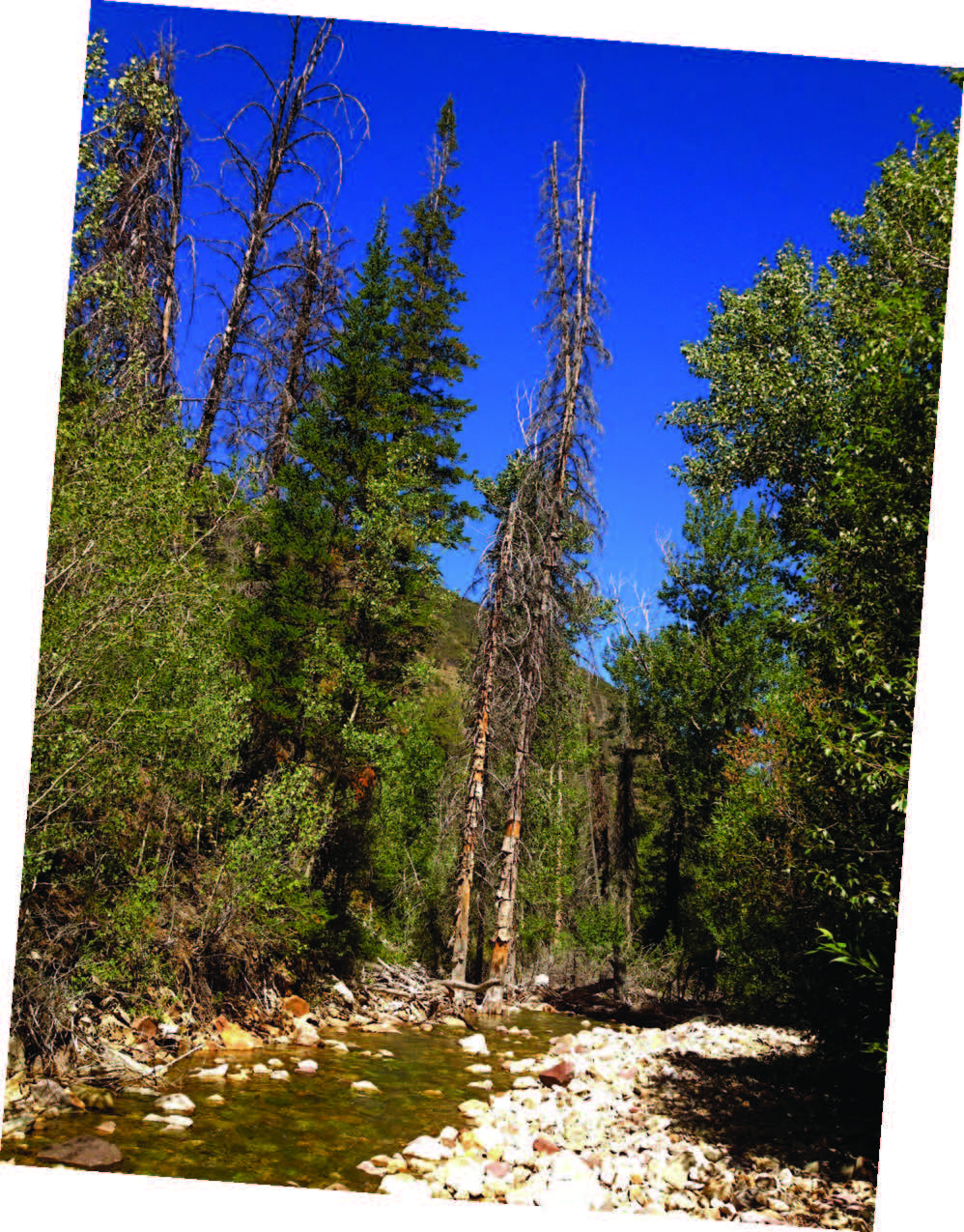 Nestled in the Humboldt-Toiyabe National Forest’s expansive Jarbidge Wilderness, Jarbidge Campground is extremely convenient by rural Nevada standards, as it’s just a mile from one of the state’s more interesting towns. Maybe better characterized as a village, Jarbidge—just a short drive from the Idaho border in extreme northeastern Nevada—is a great place for campers to re-stock and even grab a bite to eat or an ice-cream cone at the Outdoor Inn, which offers “BOOZE • GRUB • ROOMS.”
Nestled in the Humboldt-Toiyabe National Forest’s expansive Jarbidge Wilderness, Jarbidge Campground is extremely convenient by rural Nevada standards, as it’s just a mile from one of the state’s more interesting towns. Maybe better characterized as a village, Jarbidge—just a short drive from the Idaho border in extreme northeastern Nevada—is a great place for campers to re-stock and even grab a bite to eat or an ice-cream cone at the Outdoor Inn, which offers “BOOZE • GRUB • ROOMS.”
There are no paved roads in the historic town, which traces its roots to an early-1900s gold rush that occurred in the area. Despite its remoteness, summer is a relatively busy time for the hamlet. Fourth of July Weekend (July 4-6), Jarbidge Days (August 9-11), and Labor Day Weekend (August 31-September 2) mark some of the signature annual celebrations. Back at camp, you’ll find plenty of shade, excellent fishing in Bear Creek (don’t expect any whoppers), and enough isolation to still feel like you’re a million miles from civilization. There are plenty of other campsites in the area, such as Lower Bluster Campground, Pavlak Campground, Pine Creek Campground, Sawmill Campground, and Upper Bluster Campground.—Matthew B. Brown
PEAVINE CAMPGROUND
Never underestimate the value of asking a local for travel tips. Case in point: the friendly Tonopah gas station attendant who turned us onto one of the Silver State’s best campgrounds. About 50 miles north of the central Nevada town, at the southern edge of the ruggedly scenic Toiyabe Range and Arc Dome Wilderness, Peavine Campground consists of 15 first-come, first-served sites neatly dispersed around Peavine Creek.
Robust stands of large, mature cottonwood trees provide ample shade to keep tents, trailers, and campers cool on hot summer days, and the perennial stream is said to have good trout fishing. Two vault toilets and dedicated fire rings and picnic tables at each site add to camper comfort. Though the campground doesn’t offer water, purified water from crystal-clear Peavine Creek tastes great. Surprisingly light on crowds, Peavine Campground is easy to reach for any vehicle.—Charlie Johnston
PINE CREEK CAMPGROUND
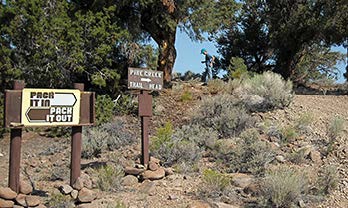
This U.S. Forest Service camping facility is popular with local hunters and families, mostly on weekends, but even on Memorial Day you can find a spot to pitch your tent. Located on the Monitor Valley side of the Alta Toquima Wilderness, Pine Creek flows down the eastern flank of Mount Jefferson and in late summer still burbles merrily around well-maintained campsites. Because of the water, lush green trees line the creek and provide welcome shade.
The Pine Creek Trail leads to Mount Jefferson. Hikers are treated to a tree-filled, redwalled canyon along the stream bank and occasionally run across evidence of horses and pack animals. We forded the creek on fallen trees in several places. As you attain higher elevations, you’ll find fertile meadows and wide sweeps of rock.
Old West buffs will find the trail intriguing. “It follows an 1860s logging road,” Humboldt-Toiyabe National Forest archaeologist Fred Frampton says. “We discovered a lumber mill and a wagon way the heck up there, [at] about 9,500 feet.”—Joyce Hollister
VIRGIN VALLEY CAMPGROUND
When we entered the southern end of Sheldon National Wildlife Refuge during an October 2009 road trip, we thought we had come upon the most popular camping destination in Nevada. It was hunting season. Long story short: There were no available sites, we got lost, but eventually we came upon and found a spot at the refuge’s ultimate place to pitch a tent.
Virgin Valley Campground, open year-round in the northeastern part of the vast refuge, provides more amenities than your typical rural Nevada campsite, including drinking water, a spring-fed swimming pool, and a rustic shower house. There is a designated fishing hole for children younger than 12, adults older than 65, and the disabled. The nearby Dufurrena Ponds have bass, crappie, and more species of warm-water fish.
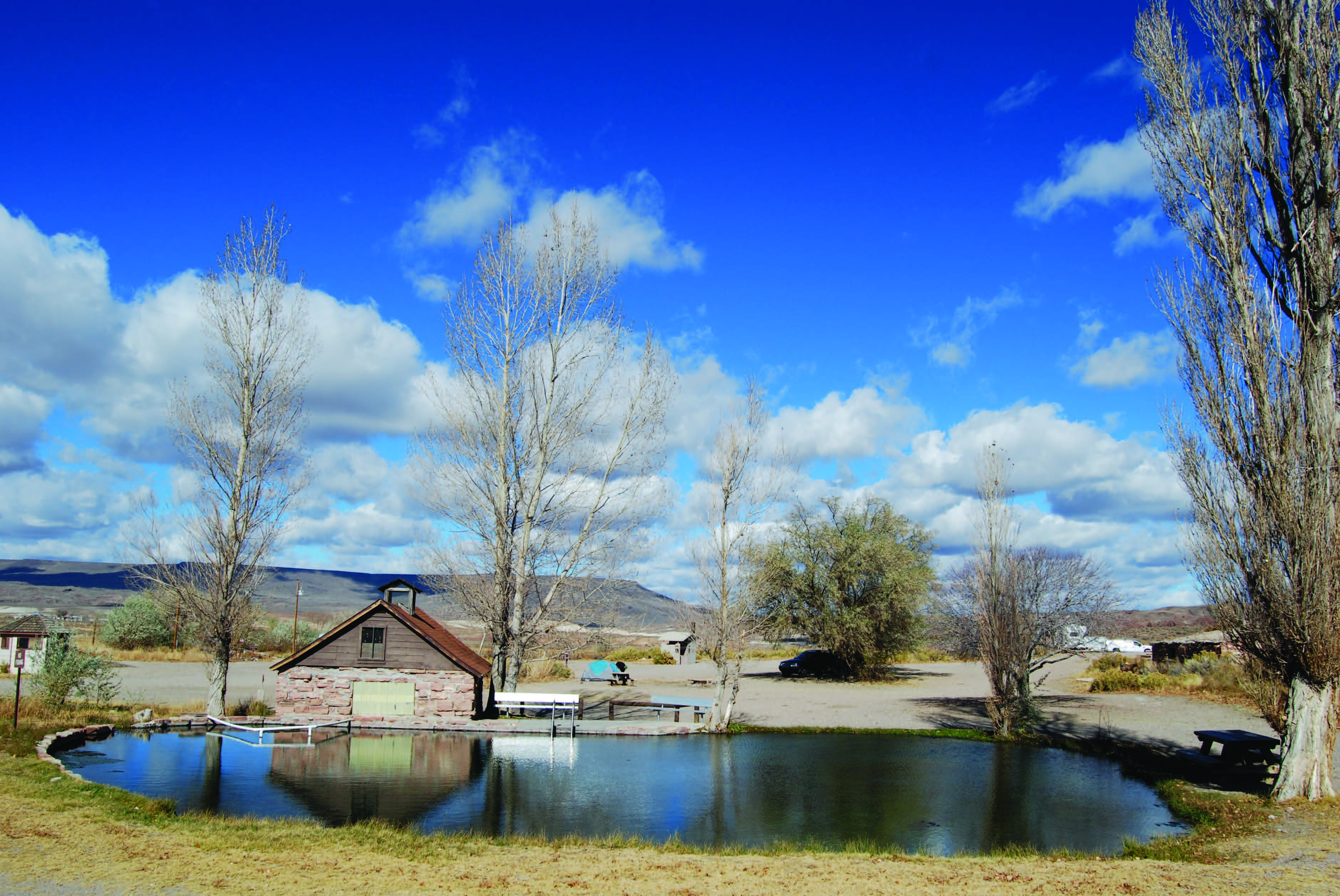
Campers are welcome on the refuge for up to 14 days. There are more than 10 campgrounds, other than Virgin Valley, within Sheldon. But all other camps are primitive; none have potable water, and some have vault toilets. A backpacking permit is required for camping along the desert trail corridor.
Garbage collection and septic-dumping facilities are not provided on the refuge. Winter snows and muddy road conditions in the spring can limit access to the more remote camps.—Matthew B. Brown
WHITE RIVER CAMPGROUND
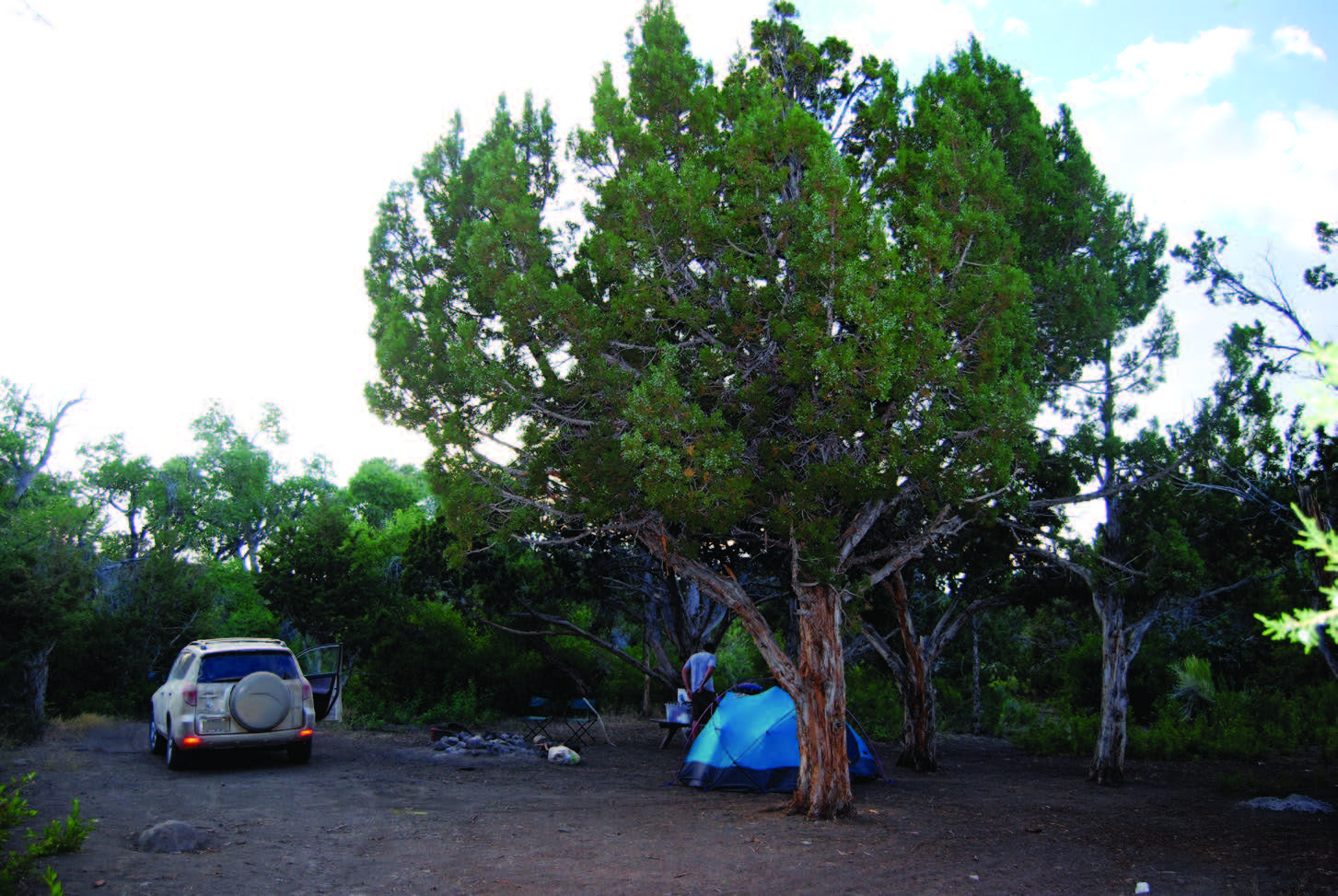
Located approximately 40 miles southwest of Ely, White River Campground in Nevada’s White Pine Range is primitive, to say the least. Surrounded in all directions by Red Mountain Wilderness, Currant Mountain Wilderness, White Pine Range Wilderness, and Bald Mountain Wilderness, this is wild country. Even in the summer, recreation in the area is light. When we visited three summers ago, we were the only campers. The fall hunting season brings a few more campers to the region, but for the most part you’ll feel like you have the place to yourself.
The campground (referred to as a concentrated use area), accessed from a winding dirt road off U.S. Highway 6, is situated along White River with all of the sites located near the banks of the stream. Each of the 10 sites has a table and fire ring, and vault toilets are available. Pack It In/Pack It Out signs are a blatant reminder to inform the public of the Leave No Trace ethics that campers shouldn’t have to be reminded of.—Matthew B. Brown
State Parks
If you’re looking for a little less overnight solitude this summer, consider visiting our more populated state parks that allow camping.
Great Basin National Park
Visitors familiar with the throngs of tourists found at such national parks as Grand Canyon, Yellowstone, and Yosemite will be pleasantly surprised by what is lacking at eastern Nevada’s Great Basin National Park. There are no long lines of tour buses, no traffic, and no need to make a camping reservation months in advance.
The only national park solely in Nevada has five developed campgrounds (one year-round) with vault toilets, picnic tables, tent pads, and campfire grills. All park camping is on a first-come, first-served basis. nps.gov/grba, 775-234-7331.

